The Coronavirus has changed life as we know it throughout recent months, and it’s also drastically affected ad rates and website traffic. Even successful publishers have had to try creative strategies to help weather the storm. With a large portion of the world’s population practicing social distancing, people’s behaviors on the internet have changed. Additionally, web development trends and tools for 2020 are shifting—and these trends are the ones that impact digital publishers the most.
Today we’re going to show you the top web development trends for 2020 across the top 1 million sites on the web, using data from BuiltWith.
What are the most popular web development frameworks in 2020?
The most popular web framework is PHP with 74% of the market share across the top 1 million sites. This shows that publishers mostly use PHP, ASP.NET, or a one-off web framework.
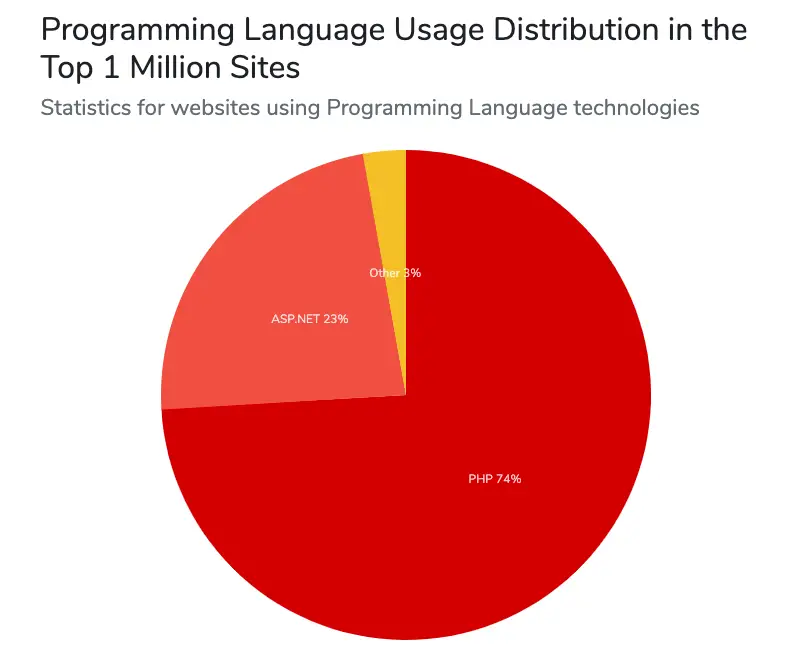
The top WordPress themes for publishers
The most popular WordPress theme is Divi, with 1.4% of the market share for the top 1 million sites. That doesn’t sound like a lot, but when there are tens of thousands of WordPress themes to choose from, having 1.4% of the total market share is pretty impressive.
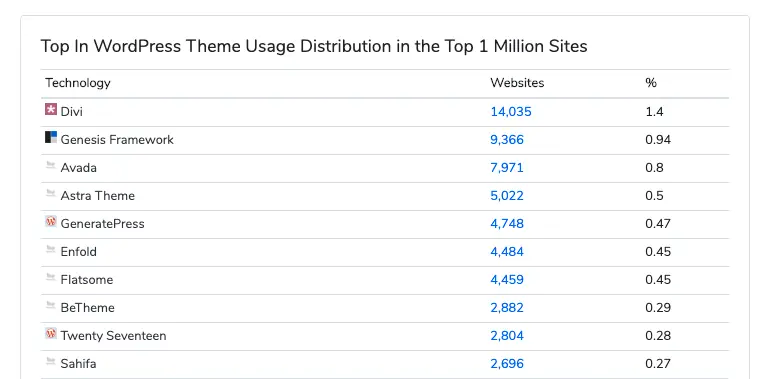
Divi’s usage surged over the past decade as well.
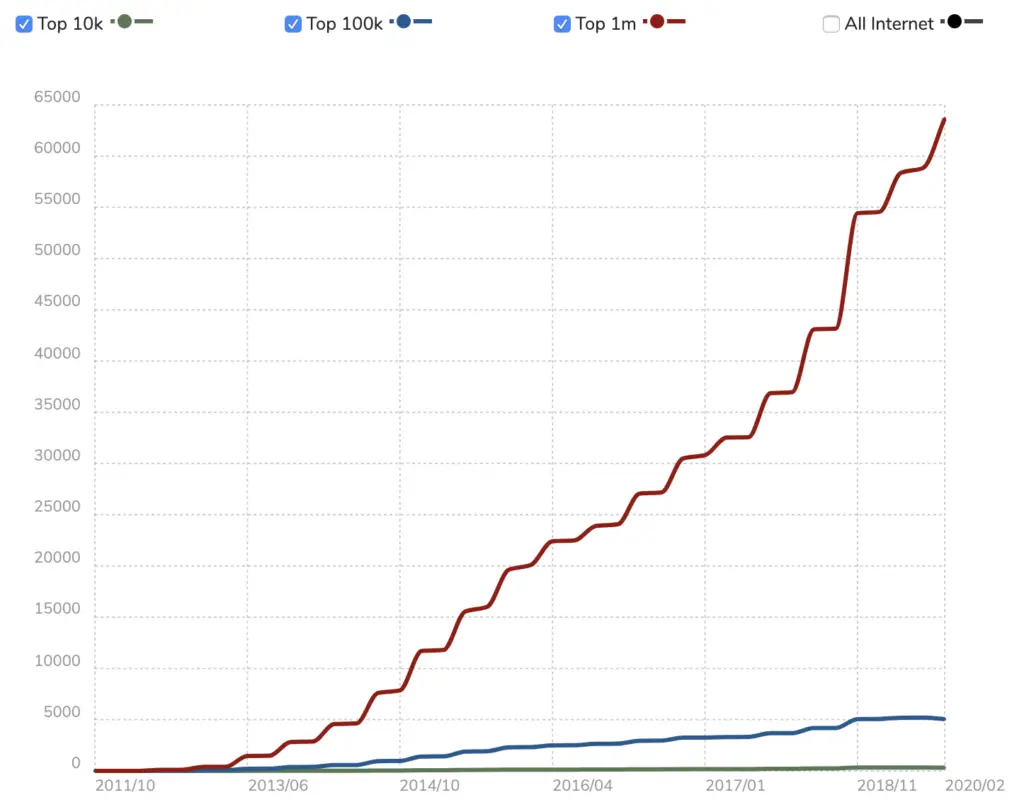
We actually use Divi on Ezoic’s website. It’s highly customizable and easy-to-use, even for publishers who aren’t tech-savvy. If you use Divi, check out some of our how-to guides:
- How To Fix Mobile Heading Fonts In Divi With One Easy Step
- How To Keep Columns Side-By-Side On Mobile in Divi
Additionally, the Genesis Theme, Avada, the Astra Theme, and GeneratePress were in the top 5.
What is the most used online video platform for publishers?
The most popular video platform for publishers was YouTube, with 72% of the total. This isn’t surprising because YouTube is universally known as the reigning king of video hosting platforms. People watch over 1 billion hours of YouTube per day, and it’s also the second-most-visited website on the web.
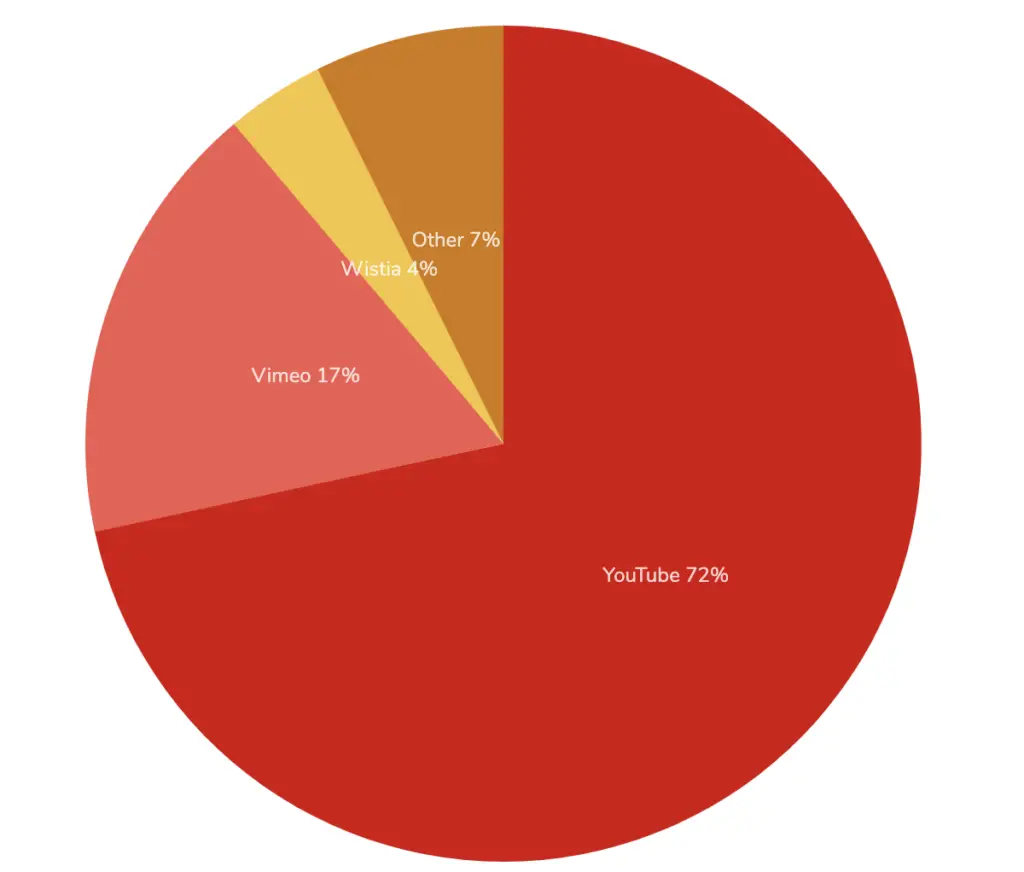
If you’re a publisher that produces video content, you should be embedding relevant videos into your blog posts. Embedding videos within your posts can increase UX metrics like time on page and dwell time.
These videos embedded within your articles have the added benefit of driving more organic traffic to your website. Google often ranks video results for “How-to” keywords close top of the SERP.
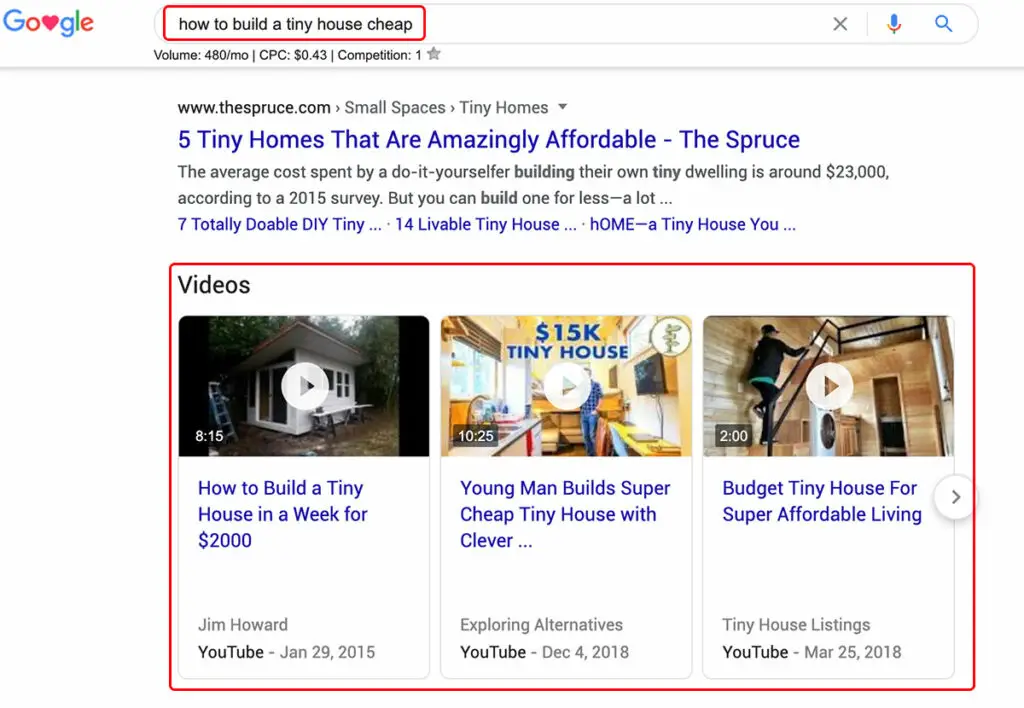
Additionally, the other video platforms in the top 5 of usage statistics were:
- Vimeo
- Wistia
- BrightcoveTV
- TidalTV
Advertising & monetization tools used by websites
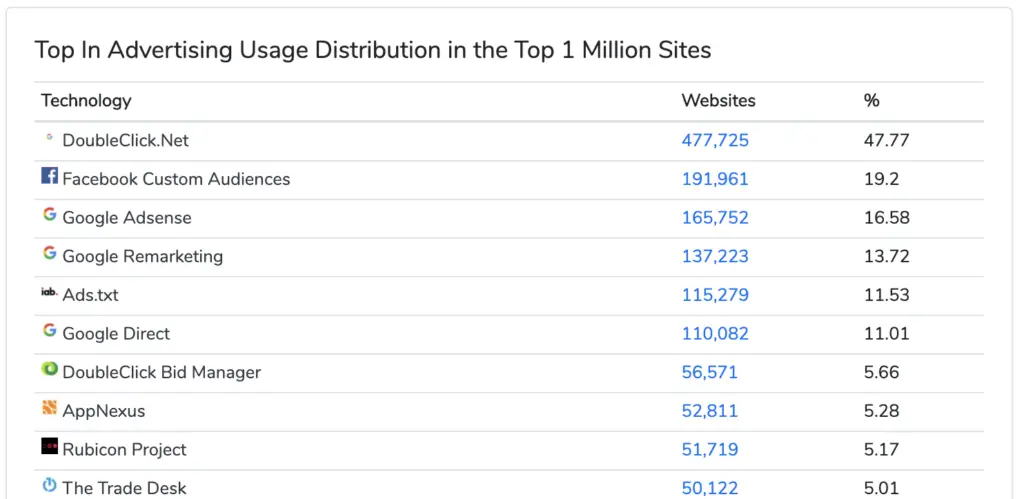
Google is the largest platform for buying and selling ad inventory. This means their 47% market share percentage of the top 1 million sites includes both advertisers and publishers who use ad tags and tech.
DoubleClick for Publishers (formerly DFP), Google Ad Exchange, and Google Adsense are combined into a new platform called Google Ad Manager.
Additionally, the 47% labeled DoubleClick.net includes sites that have Google remarketing tags on their page, which allows them to run retargeted advertisements to cookies users through Google’s display network, which includes buying that occurs in Google’s Marketing Cloud and Google Adwords.
Creative optimization technologies like Ezoic are seeing a rise in popularity also.
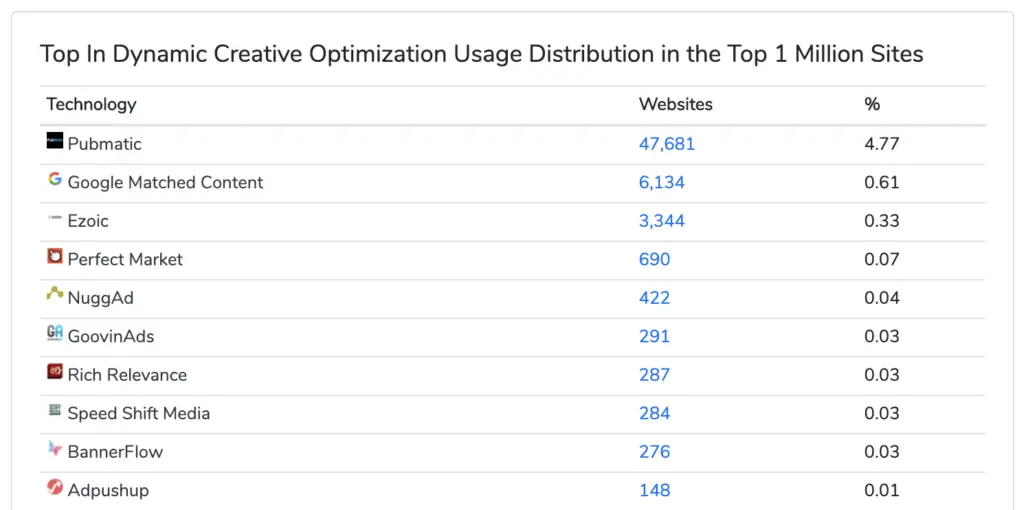
Ezoic is the third-most-popular in this category. Pubmatic is in multiple categories, so BuiltWith may be detecting “all sites” (including advertisers using the platform) and not just publishers. Google Matched Content is a part of the larger Google AdSense network.
Ezoic falls into this category because we are not an ad network—we are a self-service software that gives publishers full control over the process. We’ve seen continued growth because of our ability to help publishers increase ad revenue and improve user experiences over time.
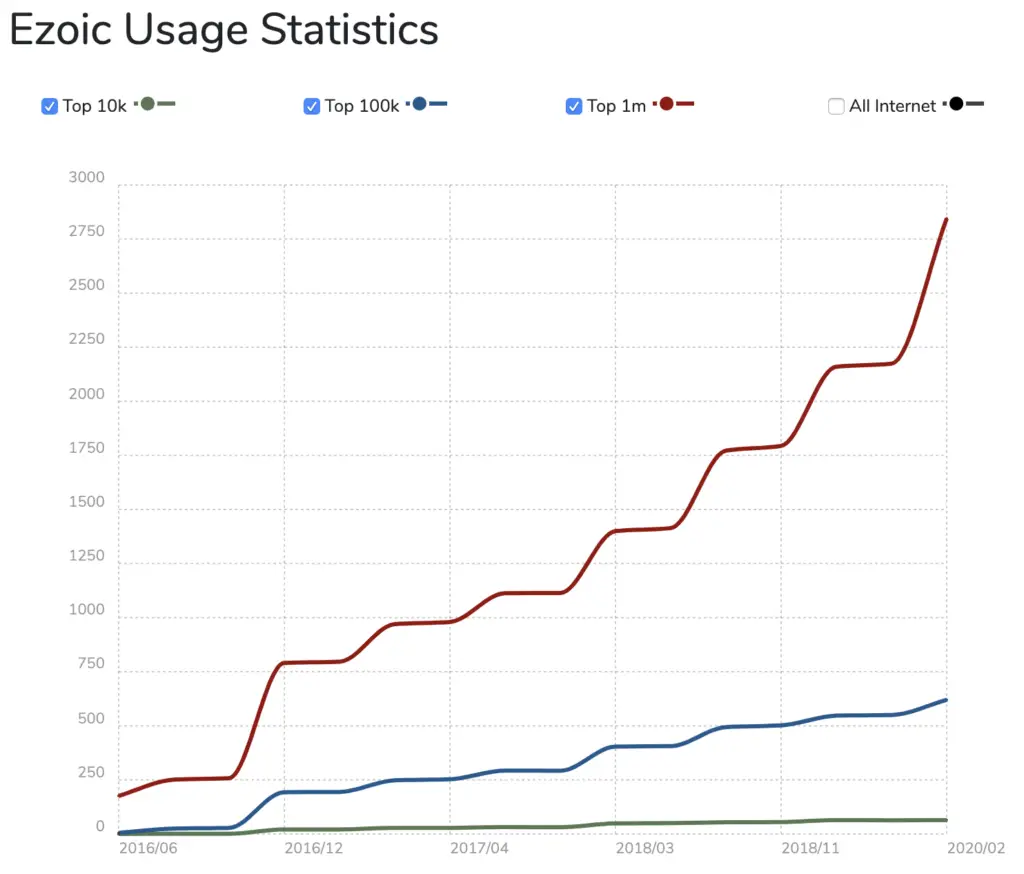
Ezoic itself might not seem like one of the top web development trends, but it’s a frontrunner for those wanting to monetize their site with display ads. Additionally, we have a guide for those wondering when to put ads on their sites.
The most popular web development tools used to park domains
Domain parking is the registration of a domain without it being associated with any services such as e-mail or a website.
For example: You purchase a domain, but never get it hosted. That domain would be considered “parked”.
GoDaddy was one of the top website development tools for parking domains. It won out with 64% of the market share.
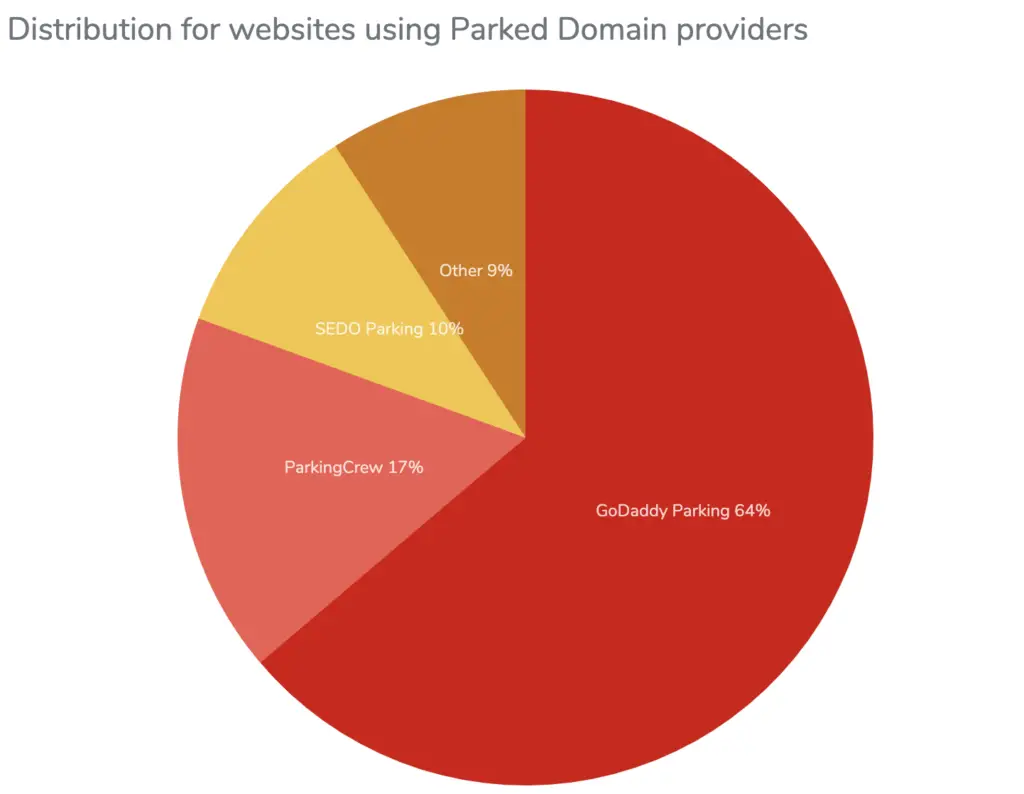
The second and third-most-popular domain parking services were ParkingCrew and SEDO Parking.
What are the most commonly used web hosting providers in 2020?
The top web hosting provider was Cloudflare. Cloudflare is technically a CDN, not a hosting provider. But many hosting providers allow integration with Cloudflare built-in. This might be why it’s appearing as the #1 hosting provider.
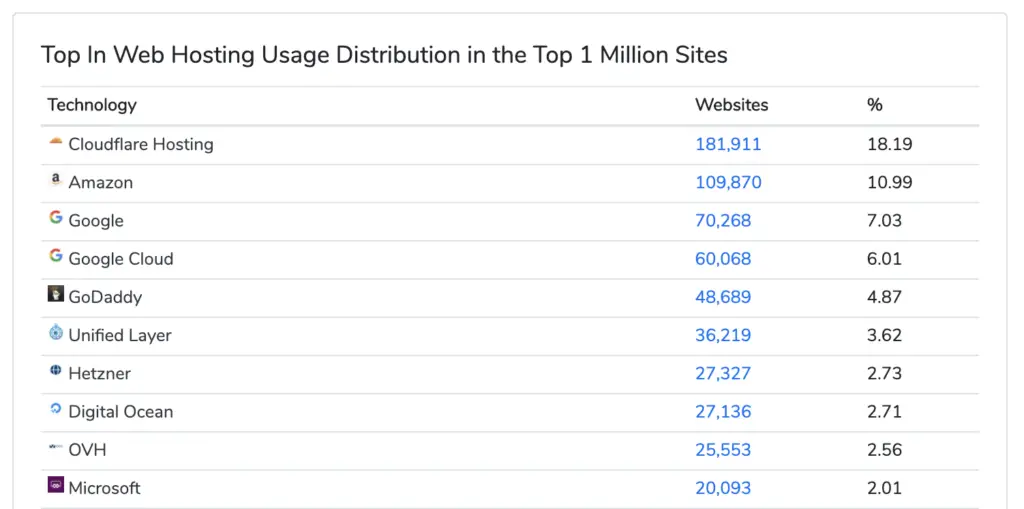
Amazon (Amazon Web Services) is in the number 2 spot. Hosting with Google Cloud is the third-most-popular choice. But there are others in the top spots that are big names like GoDaddy and Unified Layer, which is the parent company of BlueHost.
Web development trends around Content Management Systems used by websites
For Content Management Systems (CMS) usage statistics, we used data outside of BuiltWith due to two errors in their CMS usage statistics.
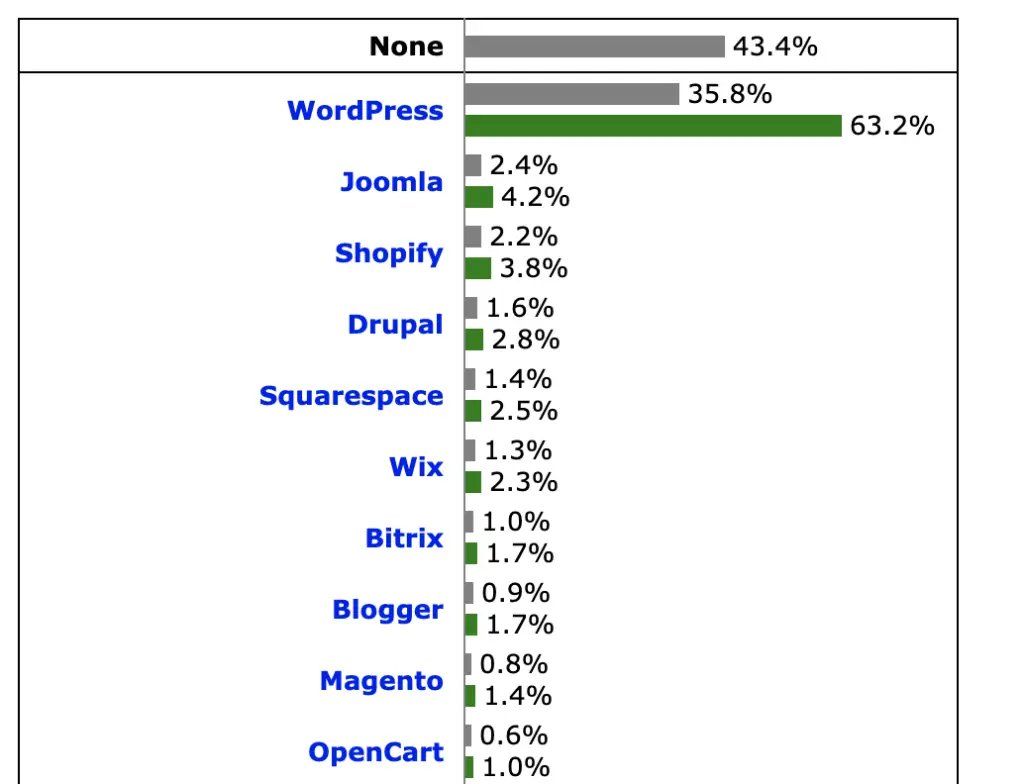
WordPress is the top Content Management System (CMS). Its versatility and ease of use are generally why it’s so popular. That being said, WordPress only makes up roughly 36% of the top million websites.
Other top contenders are Shopify, Drupal, Joomla!, and Squarespace.
Most used WordPress plugins
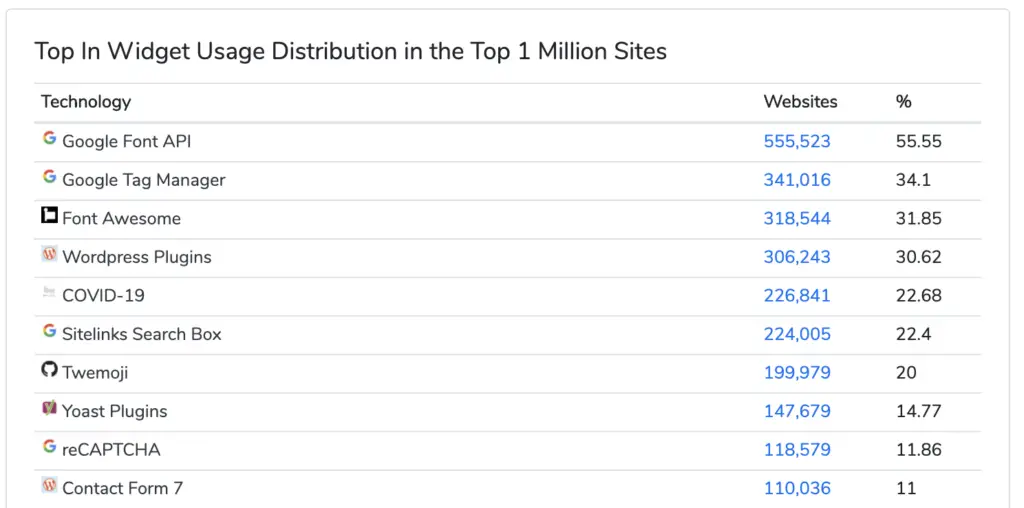
Google Fonts, Google Tag Manager, and Font Awesome are in the top three spots for widget usage.
An interesting addition is the “COVID-19” widget on this list. While there doesn’t seem to be a singular “COVID-19” widget available, BuiltWith seems to categorize this long list of COVID-19 related plugins, plus a number of websites using COVID-19 related widgets, together.
This goes to show the impact the virus has had around the globe. Here’s an interview we did with seven successful publishers on their advice on how to manage changes from the Coronavirus.
Privacy compliance tools used by websites
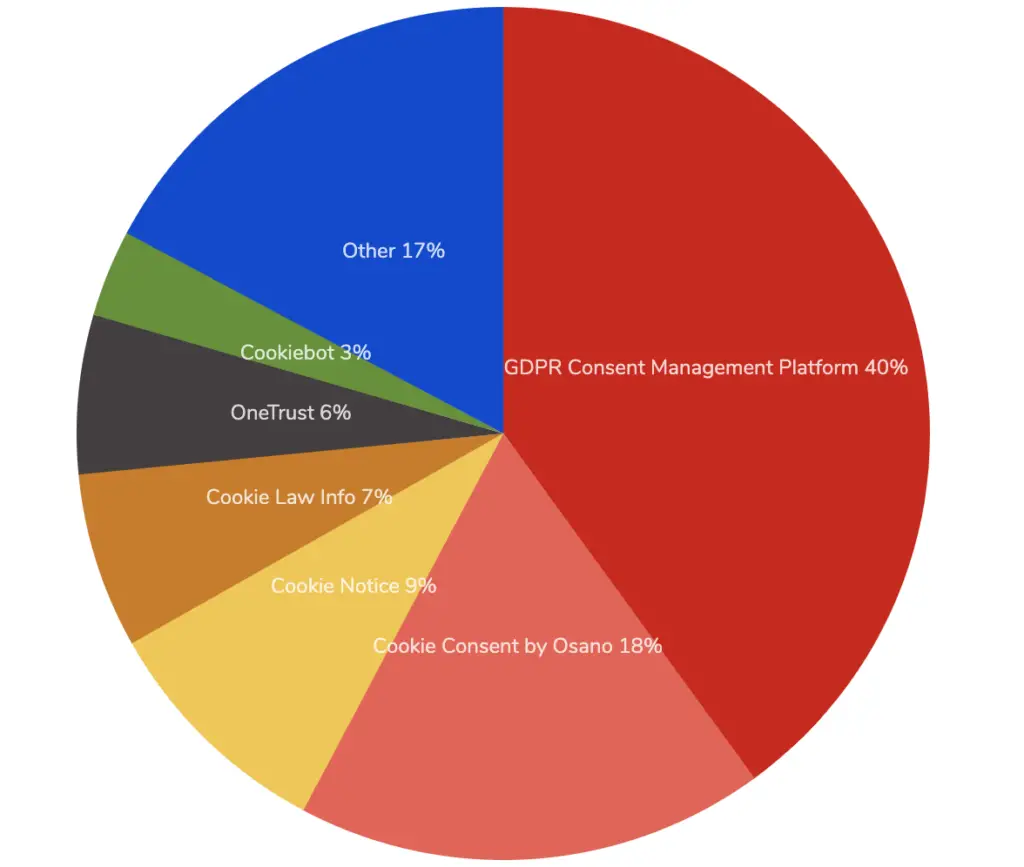
GDPR Consent Management Platform is the top tool with 40% of the market share. While there is no “one” plugin, widget, or tool to accomplish this, BuiltWith adds all the different tools into this one umbrella term.
Cookie Notice and Cookie Law Info take the second and third spots.
Additionally, Ezoic offers a GDPR Consent Management Platform. It allows publishers to easily comply with regulatory measures like GDPR and the CCPA.
What are popular web development tools for analytics and tracking?
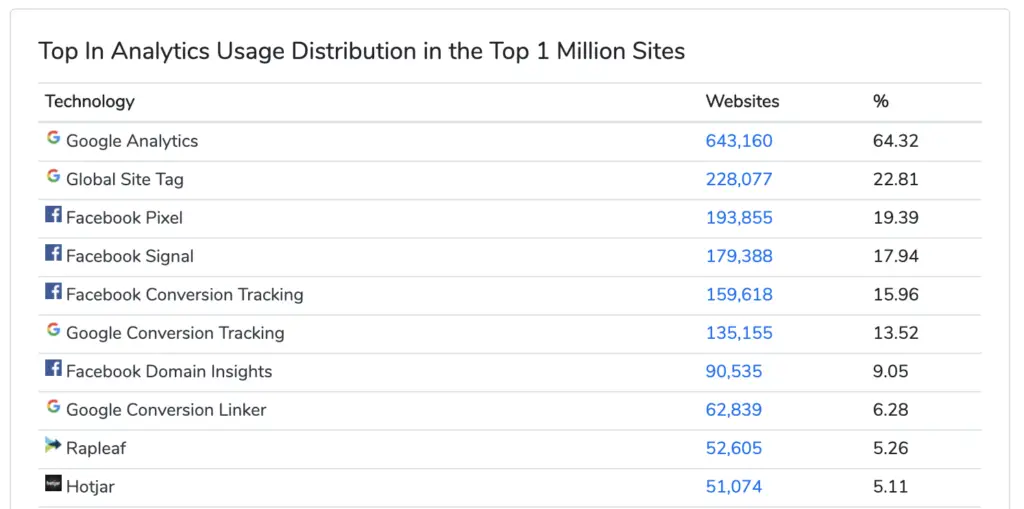
Google Analytics is the dominant player in the number one spot. Global Site Tag, Facebook Pixel, Signal, and Conversion tracking fall in the top 5.
While Google Analytics is free, its one downfall is that you can’t tie website revenue to the data. It’s possible to do this with Google Analytics 360, but this costs $150,000.
In contrast, publishers who use Ezoic get free access to Big Data Analytics. Due to the fact Big Data Analytics ties all metrics to EPMV (Earnings per thousand visitors) or page RPM, you get more granular insights on what’s driving revenue, and what isn’t.
Also, the revenue data ties to your content. This makes it possible to see which content categories, article authors, and word counts make you the most money and have the highest visitor engagement.

Summarizing the top web development trends and tools rising in popularity in 2020
- Web development framework: PHP
- WordPress theme: Divi
- Online video platform: YouTube
- Advertising: Google Ad Manager
- Domain parking: GoDaddy
- Website hosting provider: Amazon Web Services (AWS)
- Content Management System: WordPress
- WordPress Plugin: Google Fonts
- Analytics & Tracking: Google Analytics
Regardless of the tools you use, the most important thing for publishers to do right now is to increase the value of your ad inventory. This advice applies even when things are normal, but even more now than ever. As ad demand plummets due to the spread of the Coronavirus, so does the value of your ad spaces. Similarly, if you have too large a supply of ad spaces on your website when demand is this low, advertisers will bid less and less over time.
Scammers probably will come out of the woodwork during this time to try and make money off the value you created. Protect your website and the value of your audience at all costs! Furthermore, in order to balance ad supply and ad demand, multivariate testing on a per-user, per visit basis, creates the most value for your ad inventory. Ad Tester accomplishes this for thousands of publishers already with the power of machine learning.

Do you have any questions on the web development trends and tools rising in popularity in 2020? Let me know in the comments.


